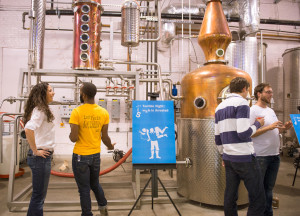By Richard Thomas
Tomorrow is the 82nd Repeal Day, marking the end in the United States’ biggest and most misguided experiment in social engineering, Prohibition. What makes recent Repeal Days particularly momentous is that they take place in the midst of a burgeoning craft distilling movement, with hundreds of small distilleries in operation in nearly every one of the 50 states, and hundreds more on the way.
Something I often say of the craft distilling movement is that it is carrying the U.S. to what distilling there might have looked like had Prohibition never happened. Wars, economic downturns, industrial trends, and changing tastes all had a huge impact on the destinies of companies and individual distilleries, but Prohibition was the game changer that ensured American whiskey distilling would never look like the Scotch industry, with its several dozen distilleries and handful of regional identities.
My outlook is not one where every new craft whiskey distillery survives, or even most of them survive. Yet where I differ from most pundits on this subject is that my version of most does not mean “almost all.” What I expect is for enough of micro-distilleries to make it into the next decade that the evolution of American craft whiskey will begin to transform everything from the way people think about mashbills to how the wholesale market operates. In some ways, this process has already begun.
By contrast, what I often see from other commentators on the future of craft whiskey is the dark implication that nearly all the micro-distilleries now in existence will be gone in just a few years time, and with it the distinct feeling that their attitude is “good riddance, upstarts!”, except towards a couple of personal favorites.
First and frankly, it is a sound prediction that a big chunk of the micro-distilleries open today won’t be around in the future. Common sense dictates as much. By way of comparison, it is often said that one in four craft breweries fail in their early years, a rate that matches the early rate of failure for small businesses in general. Stretched over the course of a decade, 71% of all small businesses ultimately fail, so obviously most micro-distilleries will as well.
What the doom-and-gloom whiskey pundits miss is that there are several hundred of these outfits running now, and more are on the way. Furthermore, this is only the first wave. If craft brewing is anything to go by, Micro-Distilling 2.0 is still to come. The next two decades could see thousands of micro-distilleries open, and even if as much as 4/5s of them ultimately fail (well above the average cited above), that would still leave hundreds of survivors. A large chunk of those survivors will be making whiskey, moonshine, or both.
The future of craft distilling, including craft whiskey, is bound up in the mechanics of how broad trends work and the numbers game. The whiskey industry, both in America and abroad, had taken a succession of major blows when trends turned against it in the 1970s. Now the trends have turned, both towards whiskey and towards going local. Despite the high failure rates suffered by new businesses in general, the trends and the numbers involved point towards American whiskey’s permanent transition back into something larger than just what happens in Kentucky and Tennessee and more innovation beyond traditional models. As good as American whiskey was before, those two features can only make it better.
 The Whiskey Reviewer A World of Whiskey, Poured Every Weekday
The Whiskey Reviewer A World of Whiskey, Poured Every Weekday

